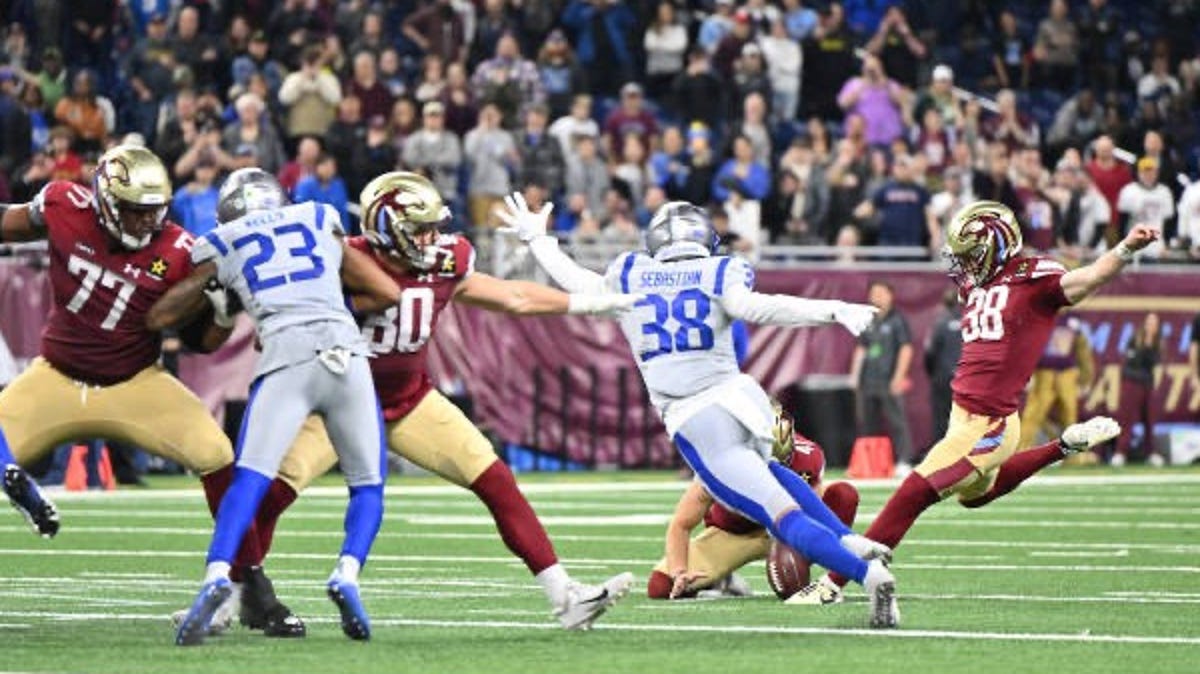With intense heat now and over the Memorial Day weekend, Houstonians are gearing up for sweltering humidity, extreme UV indexes and triple-digit temperatures. In the presence of the infamous Texas heat, maintaining proper hydration is vital to keeping Houston’s high school athletes safe.
KPRC 2′s Michael Horton spoke with Alyce Kessler, who just completed her fifth year as an athletic trainer. She is employed by Houston Methodist Sugar Land Hospital and is contracted with Almeida Crawford High School in Fort Bend ISD.
As an athletic trainer at a Texas high school, keeping athletes hydrated is a major element of Kessler’s job. On a typical day during football season, she is at the campus before the athletic periods making sure that the water basins are prepared and meticulously placed in every area where practices will take place.
Along with providing access to water, Kessler and the other trainers must keep track of the outdoor conditions to make sure the weather isn’t too intense to safely practice. To calculate this, the school uses a wet-bulb globe thermometer. On top of general air temperature, this device measures humidity, radiant heat and wind speed to provide a complete picture of the outside elements. Not only has FBISD adopted the wet-bulb globe measurements for athletics, but Texas UIL has recommended it for marching bands as well.
The wet-bulb globe temperature index has five categories, with Category 1 being the calmest and Category 5 being the most severe. On a typical summer day, Kessler estimates that the wet-bulb globe temperature is a Category 2 or 3, The guidelines affiliated with these categories include several precautions, including shorter practice times, more rest time and dedicated hydration breaks. On a Category 3 day, practices can only be two hours long, and athletes get a rest break of four to five minutes every hour.
Here’s the rest of Michael and Alyce’s discussion:
Michael Horton:. How do the coaches feel about these [guidelines]? Are they positively received by the administration?
Alyce Kessler: I personally believe that the Fort Bend [ISD] administration has taken very well to these recommendations. We’re one of the first districts in our area to really take these recommendations and enforce them and monitor them with our schools and for our student athletes. In my personal experience, I think that the coaches that I have worked with really appreciate us taking the time to keep the kids safe. I know it does alter their practice plans, but they’re really looking to myself and my coworker as athletic trainer to tell them what is going to be the best environment for our kids to practice and play in. And that’s just because they’re working out in Texas heat, and they don’t want these kids to experience any kind of heat illnesses, including exertional heat stroke. Because that is a leading cause of preventable death that in high school athletes. So, we don’t want that to happen.
We want to keep our kids as safe as possible. We do that by preventing these illnesses from happening. That comes with monitoring the wet-bulb globe temp; that comes from having our precaution items out. So, we keep a bunch of different tools in our toolbox to keep these kids safe. One of those is called the Polar Life Pod. You can use really even a tarp or a Rubbermaid container, like a big one and have ice and water ready. So, if a kid is experiencing those heat illness symptoms, they can we can get them cooled down and bring their body to a normal level if we did need to transport them.
Michael Horton: What are those particular symptoms that you mentioned?
Alyce Kessler: Symptoms can include dizziness, headache and blurred vision. And when we’re talking about other types of more intense illnesses, we would see kind of see a gradual incline. We would see peak cramping. That’s a good first symptom if kids haven’t had enough to drink, water-wise. Or maybe they have had enough to drink, but their sweat ratio is coming down. So, they haven’t had enough sodium to then absorb that existing water.
Michael Horton: Do you have any general hydration tips for Houstonians who are active outside during these especially hot months?
Alyce Kessler: Yeah. So, there’s not really a magic number for kids—or really anybody—to drink each day. It’s something that they really need to learn about themselves and how their body reacts. But we try and advocate for our kids to drink about two to three cups of water, prior to exercising and then about a cup about 10, 15 minutes prior.
If that’s a little bit hard for them to manage, I try and make it a little bit easier by saying your body weight divided by two, and that’s how many ounces you should be drinking. Say that we have a kiddo in 10th grade; he’s 150 pounds. He automatically needs 75 ounces of water that day. Then depending on, you know, how much he’s sweating during working out, we would recommend about eight to 10 ounces during the workout, per hour.
Michael Horton: Are there any mistakes or myths you see surrounding hydration and athletics?
Alyce Kessler: I wouldn’t say I see a lot of it. I know a lot of student athletes these days think anything they’re drinking is considered hydration. But we want to remember that the different ingredients of a drink are not always hydrating you. So, they need to really look at the content.
A lot of kids think energy drinks are fine to be drinking, but those are really going to dehydrate them more than actually hydrating them and can actually be hurtful for them. So, I try and have them stay away from those as much as possible, and we really try and encourage if they’re going to be drinking sports type drinks, that they look at the contents and make sure that there is a balance in carbohydrates and sodium, because that sodium is going to help for that water to be reabsorbed, which is what we want. Because if they’re drinking too much water and they’re not actually absorbing any of it, they can feel bloated, and that’s going to make them a little bit more inclined to feel sick.
Michael Horton: At the risk of making this sound like a promotion, are there any brands or supplements you recommend outside of just water?
Alyce Kessler: Within our budget, we buy Gatorade products here. [We use] powder to make Gatorade for especially hot practices, games, things like that. Because it does have a good ratio to what is provided. And then we do have different things that you can buy as an athletic trainer for your athletic training room, and one of them is it’s GatorLyte. It’s basically a salt packet. I’ll say anything similar to that, because we want to encourage absorption of the water. But that’s what we use here. I’m sure there’s other brands that that work very well that other athletic training rooms use. But that’s what I’ve used in my practice as an athletic trainer.
Michael Horton: Is there anything we didn’t get to that you think is applicable for hydration in high school athletics and Houstonians in general?
Alyce Kessler: Yeah, the athletics figures on high school campuses are going to be a huge, huge help in preventing these, preventable injuries and illnesses from occurring to kids. Having these highly qualified, you know, health care professionals on all campuses can really make or break how these kids are feeling and how they’re learning to take care of their bodies. Ultimately, we are teaching them how to advocate for their own health care and how to take care of their bodies. If they don’t have someone helping them learn that, then those skills might not be learned. That can lead to some pretty serious problems both in the present and in the future.
Michael Horton: Would you say the majority of schools have people in these positions to lead these kinds of conversations?
Alyce Kessler: That’s a no. I think it really depends on districts and how they choose to spend their money in athletics. I know that Fort Bend has at least two athletic trainers at every campus. Some campuses have three. That is really great for those kids. I know some districts have chosen to shy away from having campus athletic trainers, and they have athletic trainers at games. And, although I’m always going to be advocating for us as healthcare professionals to be on campus, I would say that even having them at games is going to be very beneficial for these student athletes.
Copyright 2024 by KPRC Click2Houston – All rights reserved.
































